The Bishop in Chess: Strengths, Weaknesses and How to Move on the Chessboard
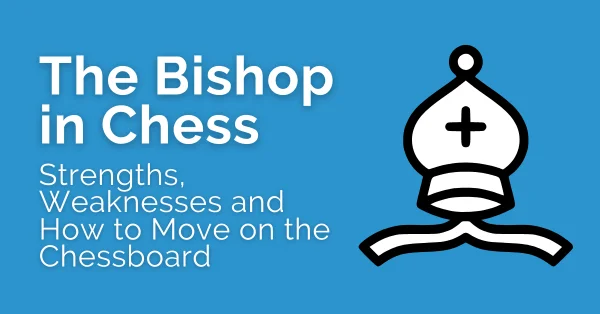
In this article, we will understand the bishop in chess in depth, how the bishop moves on the chessboard, and its strengths and weaknesses.
Many chess players love Bishops in chess. The bishop in chess has a great range of possible functions that it can perform. They are the building block of a fianchetto structure and the aggressor in the timeless Greek gift sacrifice.
For many players, such versatility draws comparison with the Knight, which excels in its ways. The battle of Bishop vs Knight has been a subject of fascination for generations. It is known in chess circles that many masters give precedence to the Bishop over the Knights.
What Is a Bishop?
The Bishop is one of the 32 pieces that a player possesses at the start of the game. Like any other piece, it is defined by its unique style and characteristics.
In a chess game, each side has two bishops: A light-square bishop and a dark-square bishop.
In a real chess set, the chess bishop is taller than the Rook and Knight but shorter than the Queen and King. It has an iconic mound that represents a Bishop from the Christian clergy.
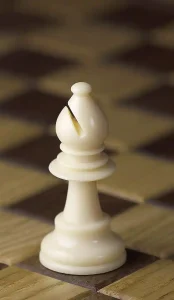
Source: Wikipedia
How does a Bishop move?
The Bishop moves along the diagonals of a chessboard. This movement of a Bishop is predictable and easy to learn.
The bishop moves in diagonals but how far can a bishop move in chess? The following position explains this
In the position below, the bishop can move to any of the squares marked by the arrow.
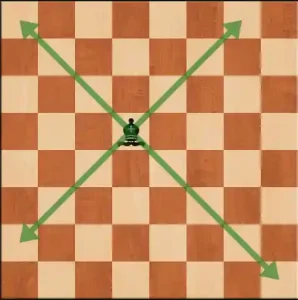
So, the possible bishop chess moves along the a2-g8 diagonal are Ba2, Bb3, Bc4, Be6, Bf7, and Bg8.
If a piece (friendly or foe) blocks the path of a Bishop then the bishop cannot jump over it.
Tutorial About Bishop – How to Play
In this section, we will take a look at how to play with the Bishop in all three phases of the game.
Bishop in Openings
The pawn structure is a key factor that affects the prospects of a Bishop. So, we should be mindful of any changes to the pawn structure and how it affects the minor pieces.
In the opening stage of the game, pawn moves affect the scope of Bishop’s moves in chess a lot. Bishops perform their best when they have open diagonals and potential targets. Having them shut behind pawns reduces the bishop’s potential movement.
Let’s take a look at the following position
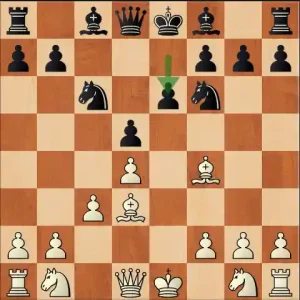
The following position is from the Exchange variation of the Caro Kann Defense. Black chose the move e6 to open the diagonal for his f8 Bishop.
However, this change in pawn structure reduces the activity of the c8 Bishop. The bishop is now locked behind its pawns.
Bishop in Middlegames
One of the top criteria when evaluating positions is piece activity. It’s such an important factor that it often overrides material considerations. Therefore we should be extra careful when pawn moves affect the activity of the Bishops.
In the middlegame, the central pawn structure determines the scope of the bishop on the chessboard.
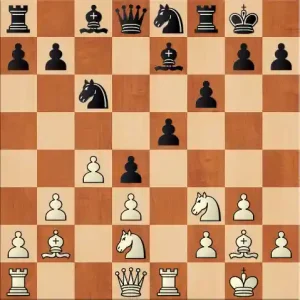
In this position, Black has an imposing pawn structure in the center. The d4-e5-f6-g7 pawn chain blunts the bishop on b2. It has limited space to move around as well.
Now comparing the Black bishop on e7, it is behind the pawn chain but it is controlling an important diagonal. It prevents the freeing b3-b4 move for White.
Bishop in Endgames
In a minor piece endgame, if there are pawns on both sides of the board then the Bishop has an advantage over the knight. This is because of the superior mobility of the Bishop.
Consequently, there is a rule given by the former World Champion Jose Raul Capablanca to combat the Bishop’s movement.
Rule: If we have a Knight vs Bishop scenario then we must place the pawns on the same color as the opponent’s bishop.
The goal is to limit the activity of the bishop.
In the following position, White seems to have an active Bishop against a centralized knight.
Black to Move
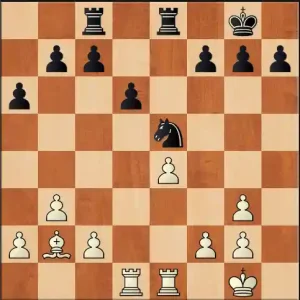
Black can play against the Bishop with the move f6.
This however is not without its risk. Since the player places pawns on the same color as the Bishop it is possible that the Bishop can attack them in the future. More on this later.
Bishop’s Tactics on the Chessboard
The long-range action of the Bishop gives it several tactical possibilities. For this reason, in some positions, the Bishop is often referred to as a ‘Sniper Bishop’.
Giving check
The Bishop can also drive early tactics. In the opening stage, the Bishops come out and eye critical squares in the opponent’s position. One such square is f7 in 1.e4 openings.
In this position, the Bishop can sacrifice itself to lure the enemy king forward.
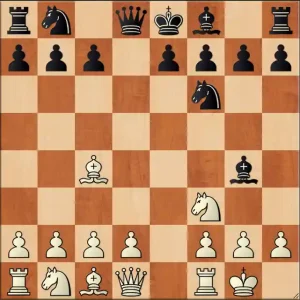
White plays the decisive Bishop move Bxf7+
Kxf7 Ng5+
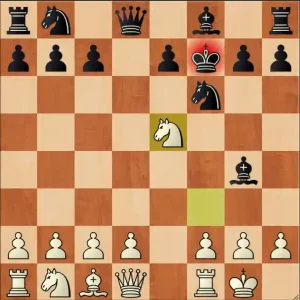
This exposes the loose positioning of Black pieces. White has a winning advantage after this combination.
Double attack
The fact that the Bishop can control multiple diagonals at once gives rise to interesting possibilities. In the following position, it is White to move.
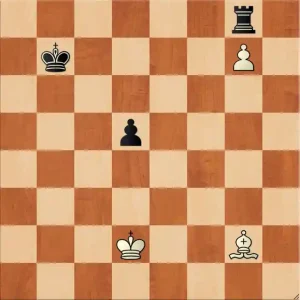
Bxd5+
This move attacks the King on b7 and the rook on g8. This tactical motif is called the ‘Double Attack’. In this, a piece attacks two pieces at once.
Black will lose the rook and then White can promote the g7 pawn to win the game.
Helpless pawns
In the endgame, placing the pawns on the same color as the opponent’s Bishop is a risky strategy.
It can run into a typical tactical motif where we capture the pawns without any compensation in return.
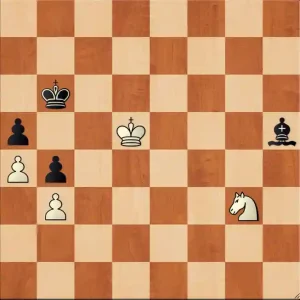
In this position, the White pawns on a4 and b3 are vulnerable as they lack adequate protection. The Knight is offside and cannot quickly move to the Queenside to protect the pawns. Black can win immediately with a simple Skewer.
Bf7+ Kd4 and Bxb3
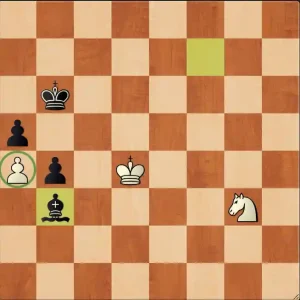
The a4 pawn also falls and Black obtains connected passed pawns. This gives Black a winning endgame.
How to effectively use your bishop
Till now we have learned that the pawn structure plays an important role in the functioning of a Bishop.
The following game demonstrates how to use a Bishop against a Knight. The Bishops excel in endgame positions with pawns on both sides of the board due to the superior movement of the bishop.
How to effectively use the Bishop pair on the chessboard
The only weakness of a single Bishop is that it cannot control or move on the squares opposite to its color. Therefore, a single bishop is stuck on its color throughout the game.
A player can overcome this weakness by using the Bishop pair. The Bishop pair represents the ultimate potential of what Bishops can do on a chessboard.
The following game is Karpov’s exemplary demonstration of how to use the Bishop pair.
The Bishop’s strengths
The Bishops in chess crave long unblocked diagonals and targets. In comparison, with the rook, another piece whose strength depends on the control of open lines, bishops are much easier to bring into the game. That is a player doesn’t have to exchange pawns to open a diagonal.
Since the Bishop is a long-range piece, it is easier to transfer a bishop from one flank to another. This makes it a powerful piece to target weaknesses on both sides of the board.
Example 1
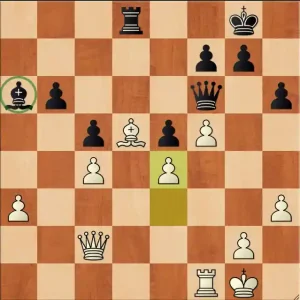
The Bishop on d5 dominates the whole board. The best piece is the one that simultaneously performs multiple functions.
In this case, the Bishop is attacking and defending at the same time. It keeps an eye on the Kingside and at the same time defends the isolated c4 pawn.
Example 2
The Bishop is an excellent defender of weak squares and pawns. In the Fianchetto structure, the Fianchetto bishop defends the weak squares around the structure.
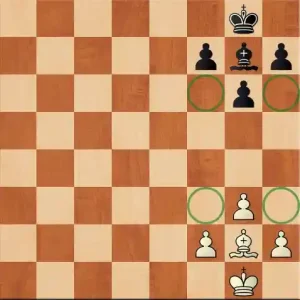
While defending the structure and the King it also provides long-range action.
Example 3
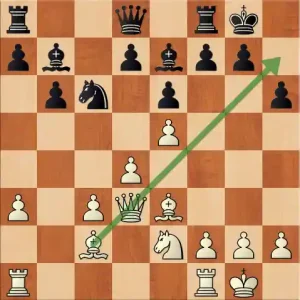
The Queen and Bishop can line up along a diagonal to form a battery. This battery is seen in many openings and pawn structures.
It is a powerful attacking concept that keeps the opponents on their toes.
The Bishop’s weaknesses
So, what are the weaknesses of the bishop? There are two principal weaknesses of the Bishop.
- A bishop can only move on squares of one color. In other words, half of the board is permanently out of bounds.
- The bishop’s movement across the chessboard is dependent upon the pawn structure.
Example 1
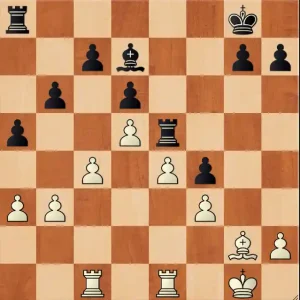
Here we see that for White the central pawn structure significantly reduces the scope of the Bishop on g2.
The central pawn structure gives more space to White but reduces the activity of his pieces.
Example 2
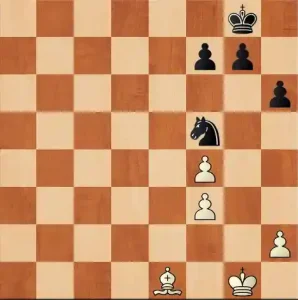
In this position, the Bishop is active and can move to a lot of squares but it has no targets. Since the pawns are on one side the Knight can effectively combat the Bishop.
Good Bishops are no good if they don’t have any targets to attack.
Example 3
Many opposite-colored Bishop positions are drawish. However, the situation changes completely with the presence of major pieces. In these scenarios, the opposite-colored bishop presents attacking opportunities.
This is because if we use a Bishop to attack on its color then its counterpart cannot help in the defense. This means we have an extra piece in the attack.
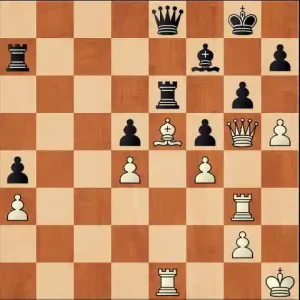
White has an extra piece in the attack in the form of the Bishop on e5.
FAQ About Bishops
Can a bishop take a king?
No, a Bishop cannot take a king. No piece on the chessboard can capture a King.
Can a bishop capture a queen?
Yes, a Bishop can capture a Queen.
Can 2 bishops force checkmate?
Yes, two Bishops can force a checkmate. It’s one of the fundamental checkmates that every player learns as a Beginner.
Can bishop jump over pieces?
Unlike Knights, the Bishop cannot jump over other pieces.
You might also like How to Set up a Chessboard as well as Rules of Chess: The Complete Guide for New Players.



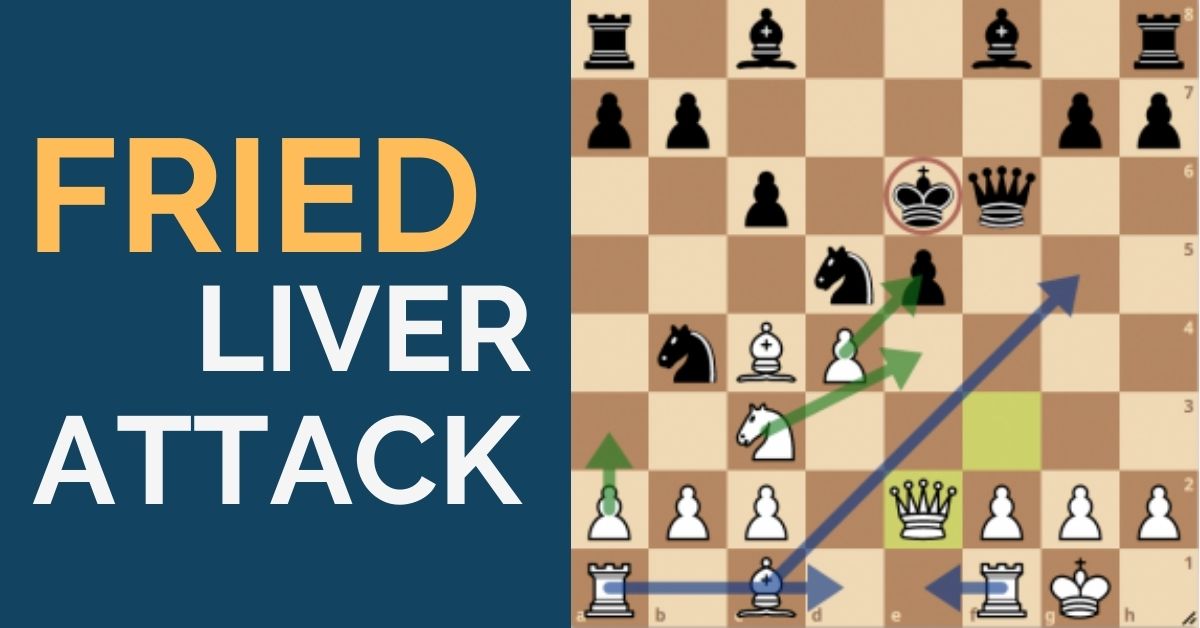
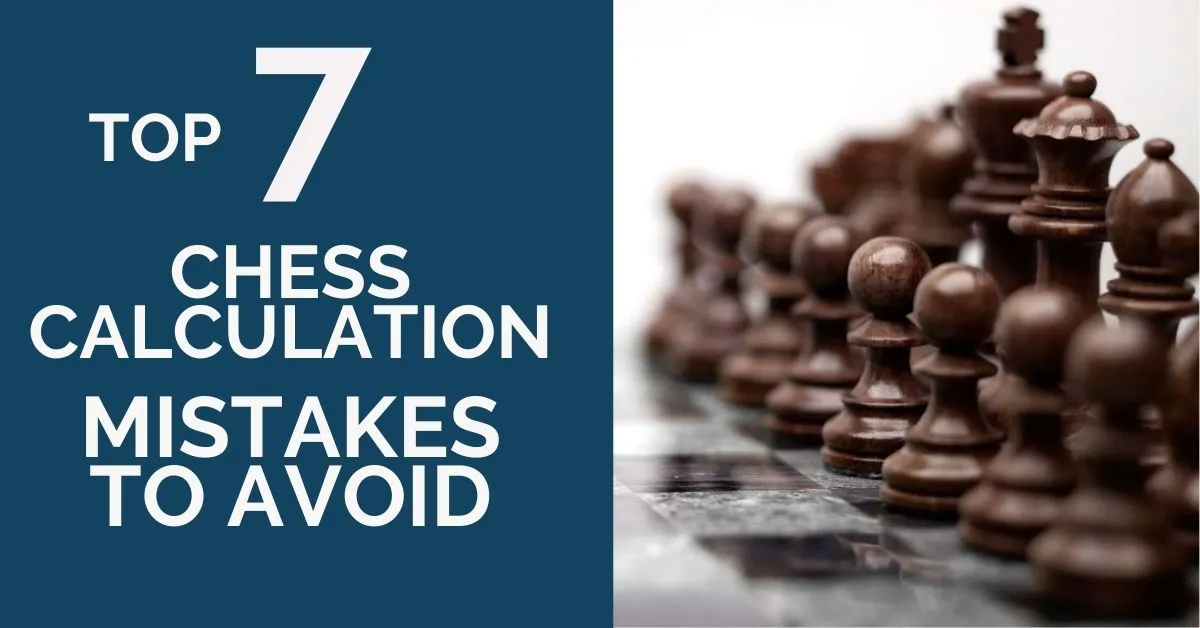
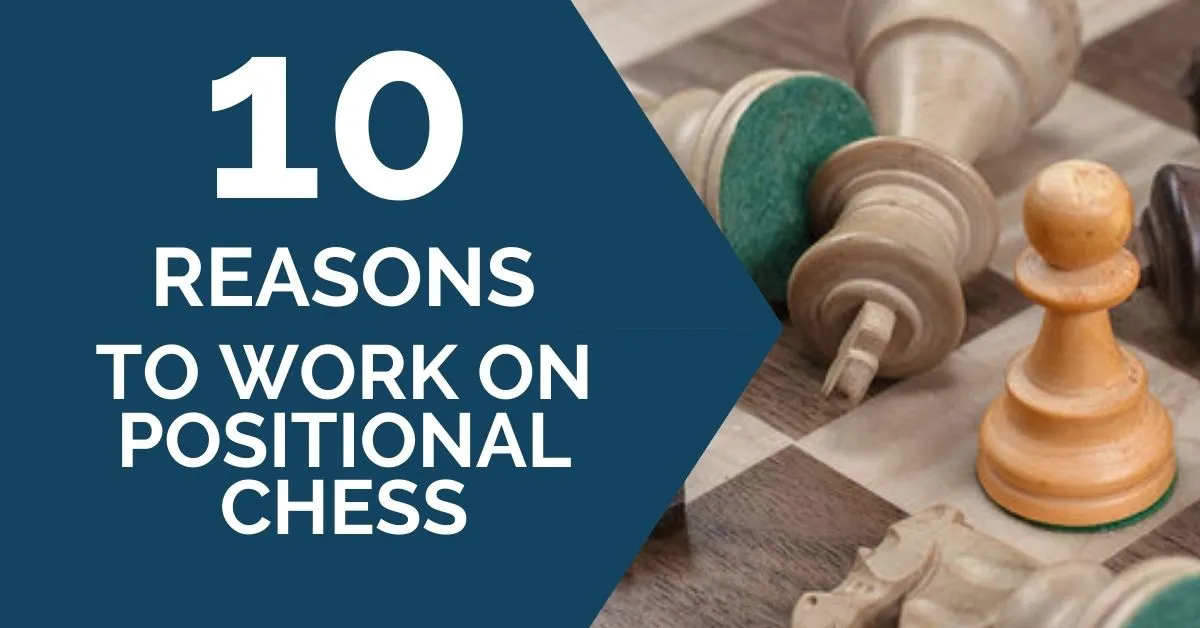




Comments: